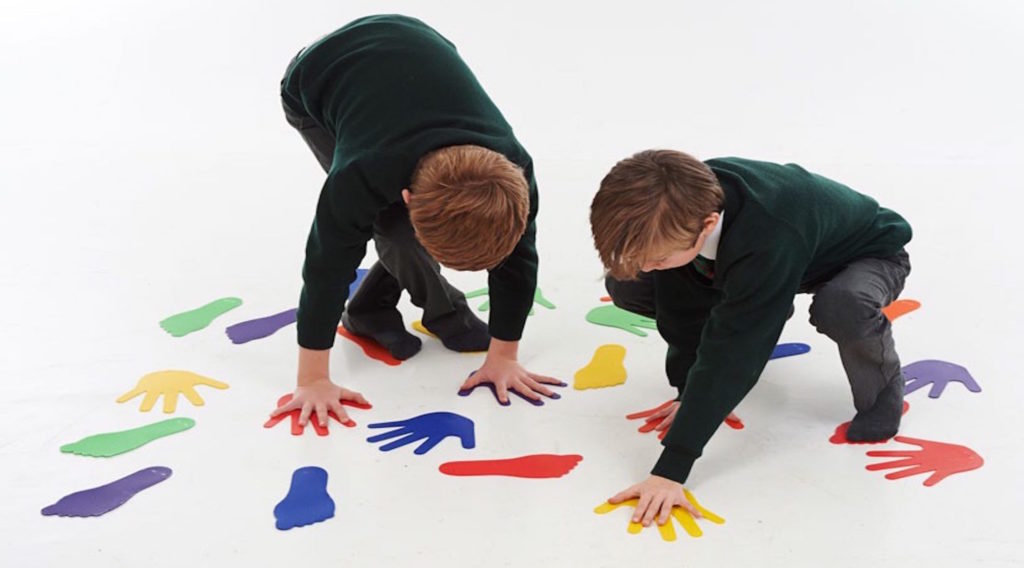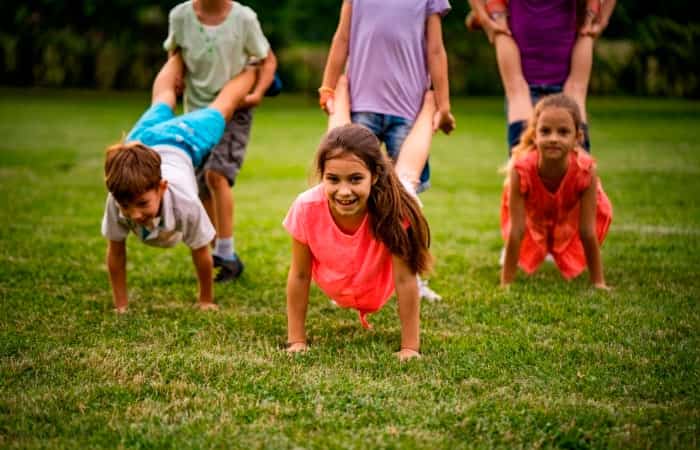
Movement in our little ones begins to develop from an early age, even before they are born they explore their body’s movement capabilities by giving us little kicks. But once out of the womb it is time to help them in their development, and we can do it through simple activities.
Gross motor skills refer to large movements, those that activate the muscles of the body, maintain balance, work on strength by lifting weighted objects, and encourage agility and speed. In general, gross motor exercises will work with various body muscles and specific skills.
Depending on the age of your child we have some activities that will encourage gross motor development.
0-1 year old
- Touching the palms
Once your little one is able to hold his head you can sit him in front of you and sing a song in which you slowly clap your hands together. Take his palms and guide him to slowly learn the movement.
- Reaching for objects
During tummy time, place toys or other objects of interest to your little one at a distance he can reach by stretching out. Lying on his back or even sitting up, you can place objects higher than head level so he can reach them by stretching.
- Rolling and crawling
Place your little one on his back on a soft but firm surface, show him an interesting toy and place it to the side to encourage him to turn his body to reach for it and get into a crawling position. Now take the object with you in front of your little one so that he starts to chase you, once he catches up with you give the object as a reward.
1-2 years old
- Obstacles
Learning to use their limbs and make movements will be of vital importance at this stage. Place books or small boxes on the floor and show him how he can crawl over the obstacles. This can be by crawling over them or standing by placing one foot before the other and taking your lead at first.
- Getting out of an obstacle
Put a couple of chairs together and surround them with brightly colored rope creating a sort of maze, take the little one to the entrance of the maze and wait for him on the other side talking to him and encouraging him to go through it. This activity will show him the limits of his body, where it fits and where it does not.
Another great idea is to place a pair of inflatable life rings on a mat, stacked on top of each other. Your little one in the center sitting down, you take his hands to show him how to get out of there and let him do the rest.
2-3 years
- Construction
With empty cardboard boxes start building a wall or tower, once finished ask him to kick it down, this movement will test his balance and skills to carry large objects.
- Walking without help, in different directions
Let your little one walk without holding on to objects or your hand, look for a suitable surface for this. You can play at walking sideways and backwards to develop balance skills.
- Touching the tips of the toes
A basic exercise to maintain flexibility, stand slowly bend your back to touch your knees and ask your little one to imitate you. Then continue down until you reach the tips of your toes without bending your knees too much.
3-4 years
- Jumping
An activity that seems simple, like walking, but involves many muscles and requires coordination and balance. Make games to jump with both feet or with only one foot, you can draw circles and squares on the floor, circles are jumped with two feet and squares with one.
Frog hops are another fun activity, find an ideal surface such as grass or a mat. Show him the squatting position and allow him to imitate you, if necessary correct the position. Once squatting it is time to jump, he may not be able to jump at first or he may only be able to do it a couple of times without losing his balance, gradually increase the duration until he jumps ten times without falling.
- Walking in a straight line
Draw a line on the floor with thick, colored tape, at least 5 centimeters long. Try to walk on it while keeping your balance. As time goes on you can add more difficulty by holding a ball while walking, or a hoop in each hand.
4-5 years old
- Baseball
The game of baseball is ideal for developing arm strength and coordination of movement and sight. They can start by tying a ball to a strong tree branch or pole so they can practice without having to pick up the ball each time.
- Wheelbarrows
A very fun game, especially when you have competitions. Ask your little one to lie down on the grass and then support himself on his hands and knees. Explain that he will be the wheelbarrow and you will hold his ankles. Start the race.
You’ve probably already realized how easy it is to help your little one’s development, as these are mostly fun games.
Remember that the age guidelines are general, but it is possible that your little one will be able to do some activities earlier or later. We hope our tips have been useful and that you have more options to encourage gross motor development.














